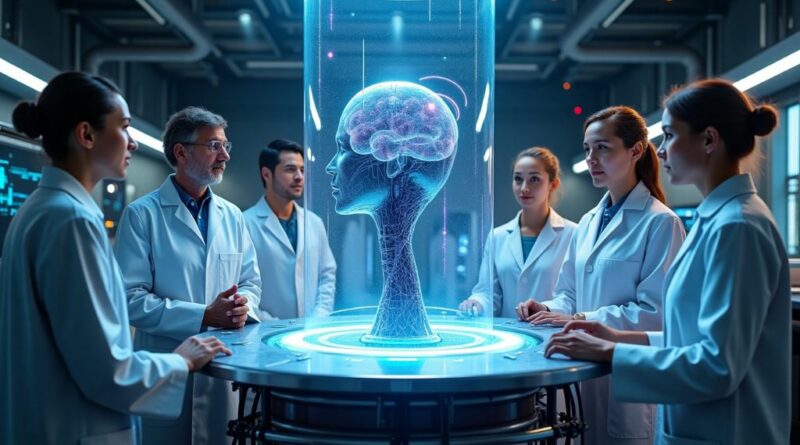Inside OpenAI’s Crisis of Conscience
In the gleaming offices of San Francisco’s tech corridor, a battle for the soul of artificial intelligence has been raging. At its centre stands OpenAI, creator of ChatGPT and arguably the most influential AI company on the planet. What began as an altruistic mission to develop artificial general intelligence (AGI) for humanity’s benefit has transformed into something far more complex—a high-stakes power struggle with potential ramifications for us all.
The Rapture and the Bunker
By mid-2023, OpenAI’s chief scientist and co-founder Ilya Sutskever—one of the brilliant minds behind the large language models powering ChatGPT—had become increasingly preoccupied with existential concerns. During a meeting with new researchers, Sutskever casually mentioned plans for “a bunker” where key scientists could shelter before the release of AGI.
“We’re definitely going to build a bunker before we release AGI,” he reportedly stated, adding that entering it would be “optional.” To those present, his comments reflected a profound anxiety about the civilisational implications of the technology they were creating.
This was no isolated concern. Sutskever had recently shifted half his focus from advancing AI capabilities to AI safety research. According to those close to him, he appeared “both boomer and doomer: more excited and afraid than ever before of what was to come.”
The Idealism Eroding
OpenAI’s founding vision was radically democratic—to develop AGI collaboratively for humanity’s benefit. Founded as a non-profit by Sam Altman, Elon Musk, and others in 2015, the organisation pledged to share research openly with other institutions. Hence the name: Open AI.
But by 2019, these ideals had begun to erode. The path to AGI required enormous capital investment. After a leadership struggle between Musk and Altman, Musk departed, taking his funding with him. Altman’s solution was to restructure OpenAI, creating a “capped-profit” arm within the non-profit to raise additional capital.
This hybrid structure represented a critical philosophical pivot. What had begun as an open, collaborative project was transforming into something more commercially driven and less transparent.
Two Cultures on Collision Course
By late 2023, two competing cultures had emerged within OpenAI:
- The “safety” culture, championed by Sutskever, focused on careful, responsible AGI development with robust safeguards.
- The “growth” culture, led by CEO Sam Altman, prioritised product launches, user growth, and commercial opportunities.
According to multiple sources, Altman’s leadership style was creating internal friction. He reportedly had a habit of agreeing privately with conflicting viewpoints, creating confusion and mistrust. Meanwhile, OpenAI president Greg Brockman allegedly complicated matters by making last-minute changes to established project plans.
For Sutskever and OpenAI’s then-chief technology officer Mira Murati, these dynamics weren’t just frustrating—they were potentially catastrophic. As Sutskever reportedly told board members: “I don’t think Sam is the guy who should have the finger on the button for AGI.”
The November Coup
By autumn 2023, both Sutskever and Murati had independently approached OpenAI’s independent board members—Helen Toner, Tasha McCauley, and Adam D’Angelo—with grave concerns about Altman’s leadership.
The board members had their own doubts. According to sources familiar with their thinking, they had discovered Altman had not been transparent about various matters, including a breach in safety review protocols and the legal structure of the OpenAI Startup Fund.
After extensive deliberation and reviewing evidence compiled by Sutskever and Murati, the board made their decision. On November 17, 2023, Sutskever fired Altman via Google Meet, with the independent board members present. Murati was installed as interim CEO, and Brockman was removed from the board while retaining his company role.
The 72-Hour Reversal
The decision triggered an immediate backlash. Within hours, Altman and Brockman had begun characterising the firing as a “coup” by Sutskever. Brockman resigned in protest, followed by three senior researchers.
Employee outrage mounted, fuelled by the board’s opaque reasoning, concerns about a potential loss of equity value, and fears that the company might unravel. Meanwhile, Murati—whose feedback had helped precipitate Altman’s removal—grew unwilling to explicitly support the board’s decision.
Sutskever’s resolve crumbled in the face of potential company collapse. By Monday morning, both he and Murati had switched sides, concluding that Altman’s return was the only way to save OpenAI. The board had lost.
Empire Rising
Today’s OpenAI bears little resemblance to its founding vision. It has become “a non-profit in name only,” aggressively commercialising products and pursuing record-breaking valuations. In March 2024, the company raised $40 billion—the largest private tech funding round ever recorded—reaching a $300 billion valuation.
This transformation reflects broader industry trends. The major AI research labs have grown increasingly secretive, withholding technical details about their models. A race to build ever-larger AI systems has triggered unprecedented spending, with six major tech giants seeing their market capitalisations increase by more than $8 trillion after ChatGPT’s release.
Yet questions about generative AI’s economic value persist. Recent studies suggest the technology isn’t increasing productivity for most workers while potentially eroding critical thinking skills. As Bloomberg writers noted, there’s an “uncomfortable prospect: that this supposedly revolutionary technology might never deliver on its promise of broad economic transformation, but instead just concentrate more wealth at the top.”
The Human Cost
Meanwhile, the human and environmental costs of AI development fall disproportionately on vulnerable populations. Workers in Kenya reportedly earned minimal wages filtering violence and hate speech from OpenAI’s systems. Artists face displacement by AI models trained on their work without consent or compensation. The journalism industry struggles as AI technologies generate unprecedented volumes of misinformation.
Critics argue we’re witnessing a familiar pattern: the amassing of extraordinary wealth by a small elite at tremendous expense to everyone else—what some have called “the empire of AI.”
The Post-Blip World
After the November crisis (now known internally as “The Blip”), both Sutskever and Murati eventually left OpenAI, joining a growing list of leaders who have departed after conflicts with Altman. Like many before them, they’ve established their own AI ventures to compete in shaping this transformative technology.
Meanwhile, Altman continues to champion AGI’s future benefits with increasing confidence. In September 2024, he declared that an “Intelligence Age” characterised by “massive prosperity” would soon arrive.
For critics, AGI has become primarily rhetorical—a “fantastical, all-purpose excuse” for OpenAI to pursue greater wealth and influence. Under the guise of a civilising mission, they argue, the AI empire accelerates its expansion and consolidates its power.
The Questions That Remain
The OpenAI saga raises profound questions about AI governance. With these systems poised to reshape fundamental aspects of society, how do we ensure they improve our future rather than undermine it?
November 2023’s events dramatically illustrated how much power over this critical technology rests with a small group of Silicon Valley elites. As AI advances, questions about oversight, transparency, and responsibility become increasingly urgent.
Who should have “the finger on the button” for technologies with such transformative potential? How do we balance innovation with safety? Can commercial interests align with humanity’s broader wellbeing? These questions remain unanswered as the AI revolution accelerates.
Meanwhile, in San Francisco’s tech headquarters, the work continues—billions of parameters processing unfathomable amounts of data, models growing ever more capable, and the same handful of people making decisions that may shape our collective future.
The empire of AI continues its expansion, for better or worse. The rest of us can only watch and wonder where it leads.
We’d love your questions or comments on today’s topic!
For more articles like this one, click here.
Thought for the day:
“He who conquers himself is the mightiest warrior.” Confucius



